Late Fall 2023 Snapshots From Extension’s Pollinator Paradise Garden
go.ncsu.edu/readext?973710
en Español / em Português
El inglés es el idioma de control de esta página. En la medida en que haya algún conflicto entre la traducción al inglés y la traducción, el inglés prevalece.
Al hacer clic en el enlace de traducción se activa un servicio de traducción gratuito para convertir la página al español. Al igual que con cualquier traducción por Internet, la conversión no es sensible al contexto y puede que no traduzca el texto en su significado original. NC State Extension no garantiza la exactitud del texto traducido. Por favor, tenga en cuenta que algunas aplicaciones y/o servicios pueden no funcionar como se espera cuando se traducen.
Português
Inglês é o idioma de controle desta página. Na medida que haja algum conflito entre o texto original em Inglês e a tradução, o Inglês prevalece.
Ao clicar no link de tradução, um serviço gratuito de tradução será ativado para converter a página para o Português. Como em qualquer tradução pela internet, a conversão não é sensivel ao contexto e pode não ocorrer a tradução para o significado orginal. O serviço de Extensão da Carolina do Norte (NC State Extension) não garante a exatidão do texto traduzido. Por favor, observe que algumas funções ou serviços podem não funcionar como esperado após a tradução.
English
English is the controlling language of this page. To the extent there is any conflict between the English text and the translation, English controls.
Clicking on the translation link activates a free translation service to convert the page to Spanish. As with any Internet translation, the conversion is not context-sensitive and may not translate the text to its original meaning. NC State Extension does not guarantee the accuracy of the translated text. Please note that some applications and/or services may not function as expected when translated.
Collapse ▲In late 2008, I planted a demonstration pollinator garden at Chatham Mills to provide forage from early spring to late fall for pollinators such as honey bees, native bees, butterflies, flower flies, hummingbirds, beetles, and other beneficial insects. The garden features over 225 unique species of perennials, 85% of which are native to North Carolina. The garden is a great teaching tool that I use to conduct workshops and tours for hundreds of folks each year. It has taught me so much and I enjoy sharing this knowledge with others.
Click here for links to all the seasonal photo collections.
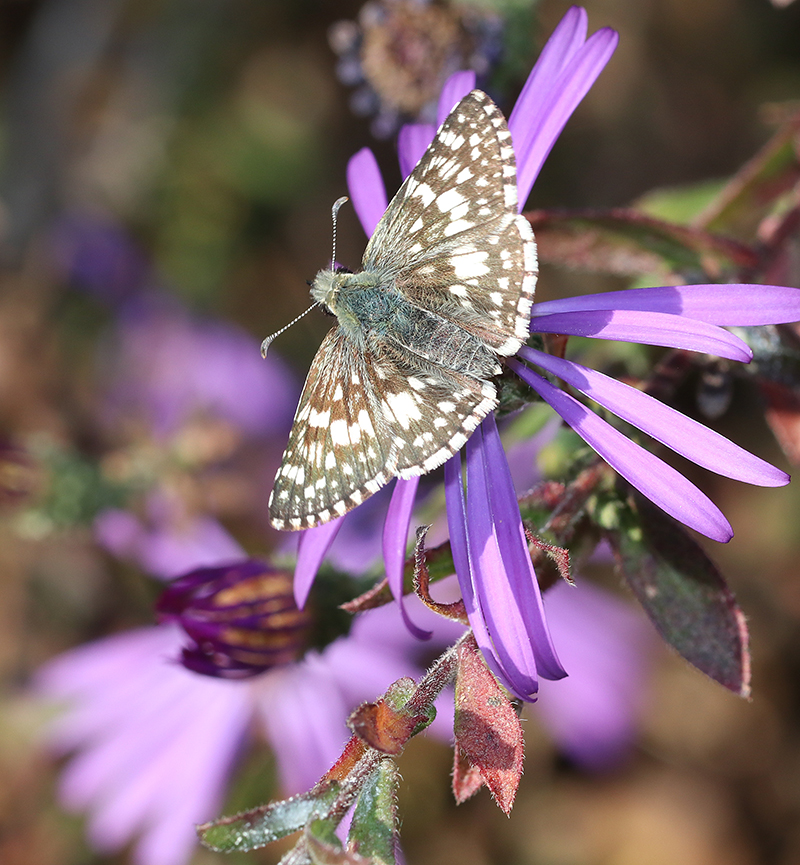
Common checkered-skipper on Georgia aster (Symphyotrichum georgianum). Photo by Debbie Roos.
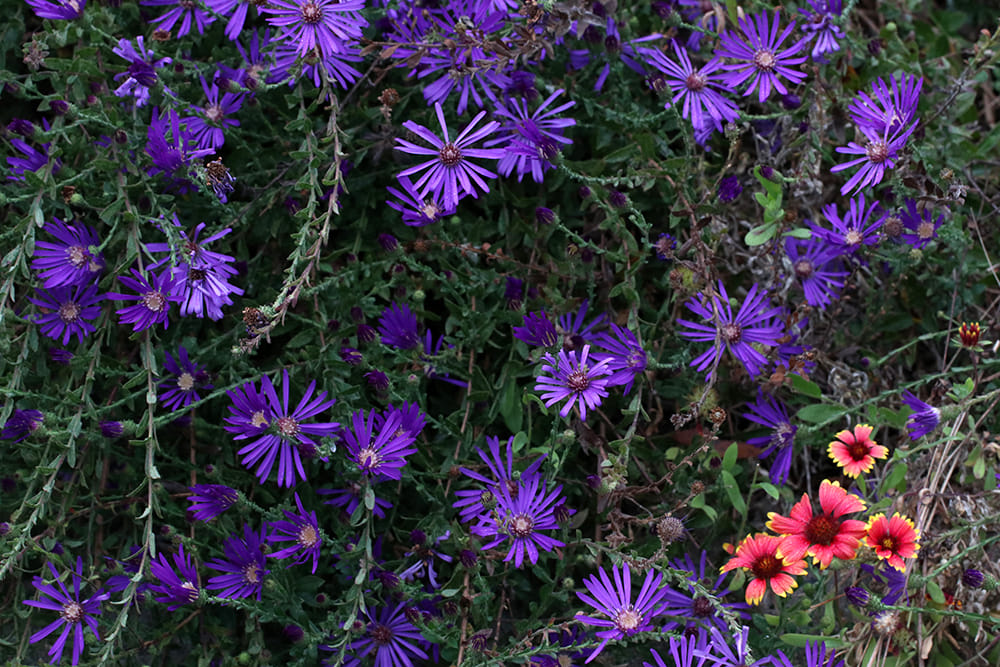
Georgia aster (Symphyotrichum georgianum) and Indian blanket (Gaillardia pulchella). Photo by Debbie Roos.
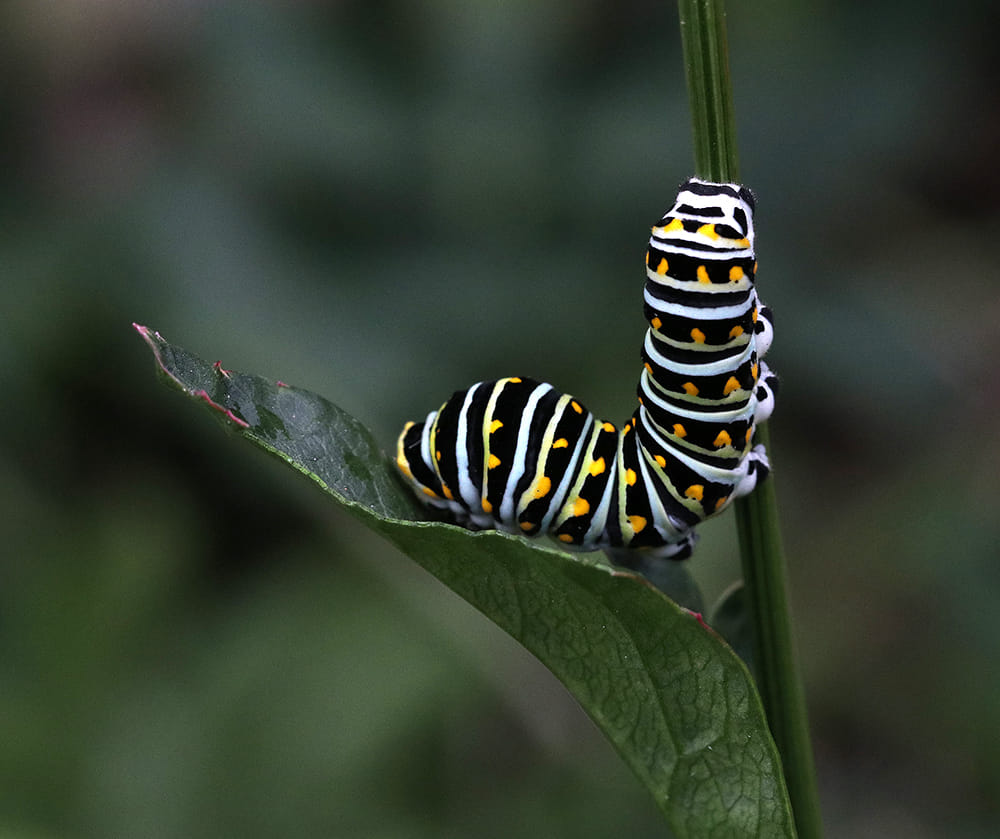
Black swallowtail caterpillar on its native host plant, golden alexander (Zizia aurea). Photo by Debbie Roos.
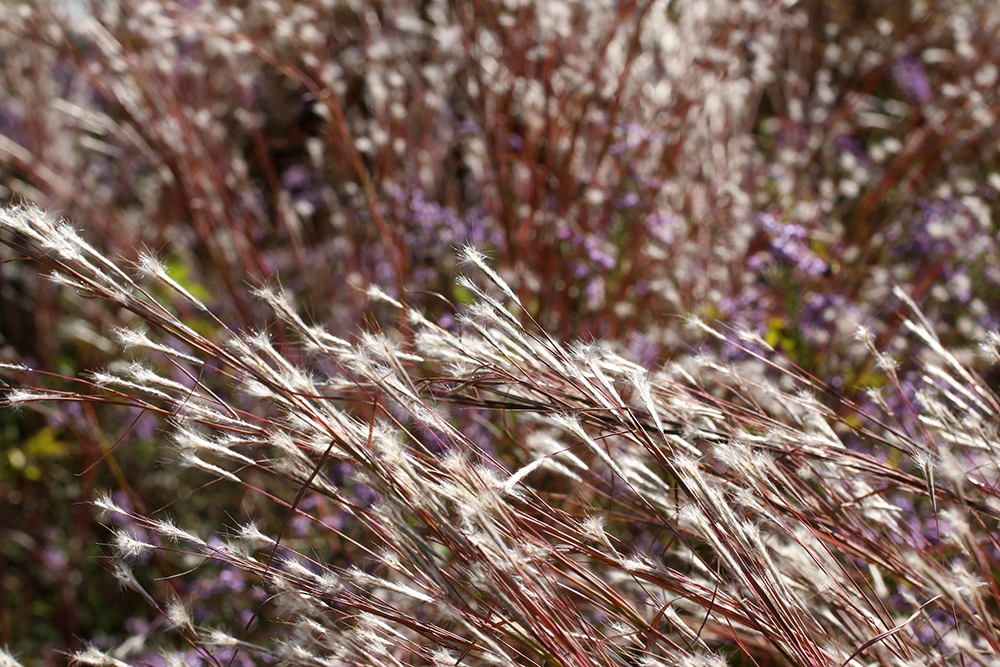
Splitbeard bluestem (Andropogon ternarius) with eastern silvery aster (Symphyotrichum concolor). Photo by Debbie Roos.
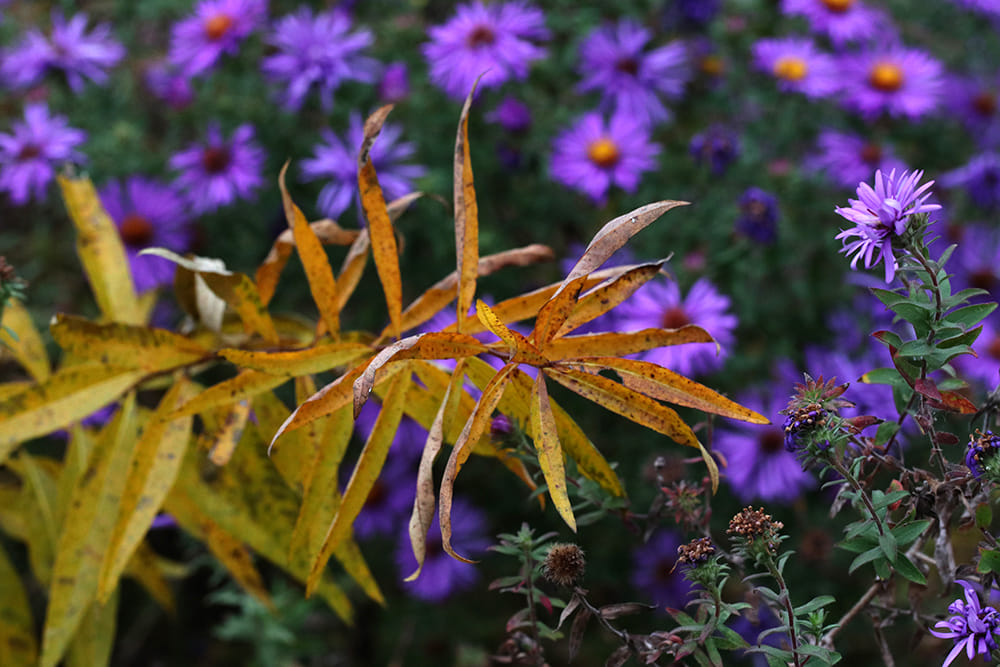
Fall color on bluestar (Amsonia tabernaemontana) foliage and aromatic aster (Symphyotrichum oblongifolium). Photo by Debbie Roos.
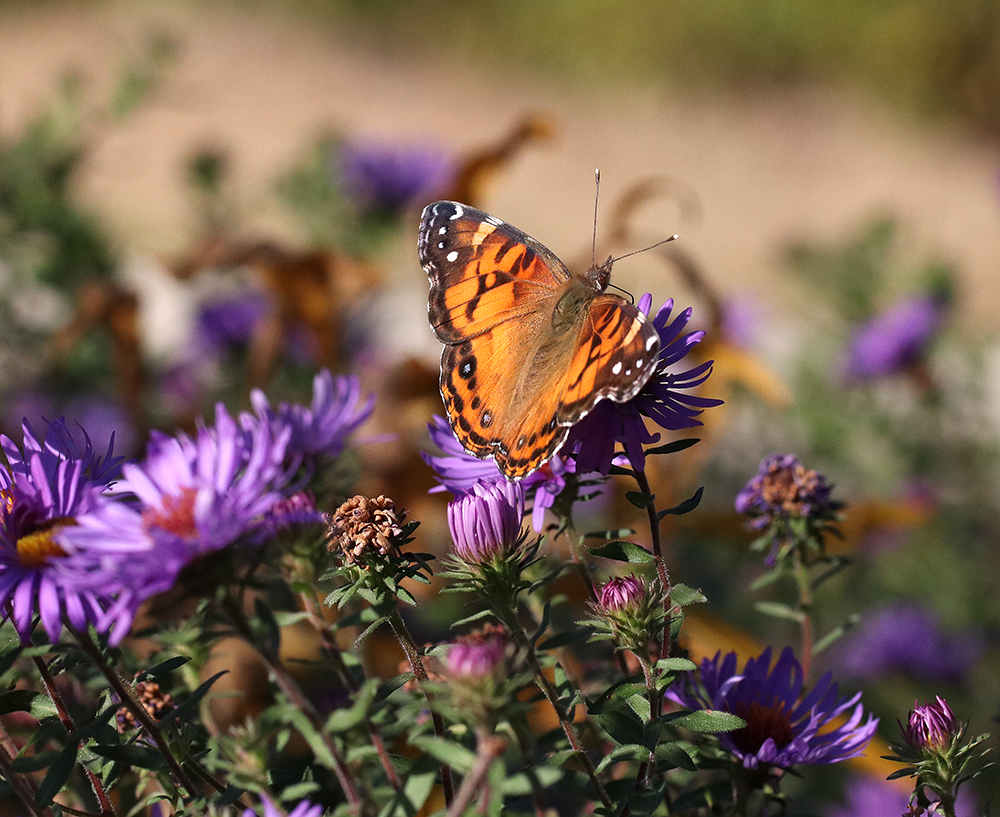
American lady nectaring on aromatic aster (Symphyotrichum oblongifolium). Photo by Debbie Roos.

White-flowered cultivar of seashore mallow (Kosteletzkya virginica ‘Immaculate’). Photo by Debbie Roos.
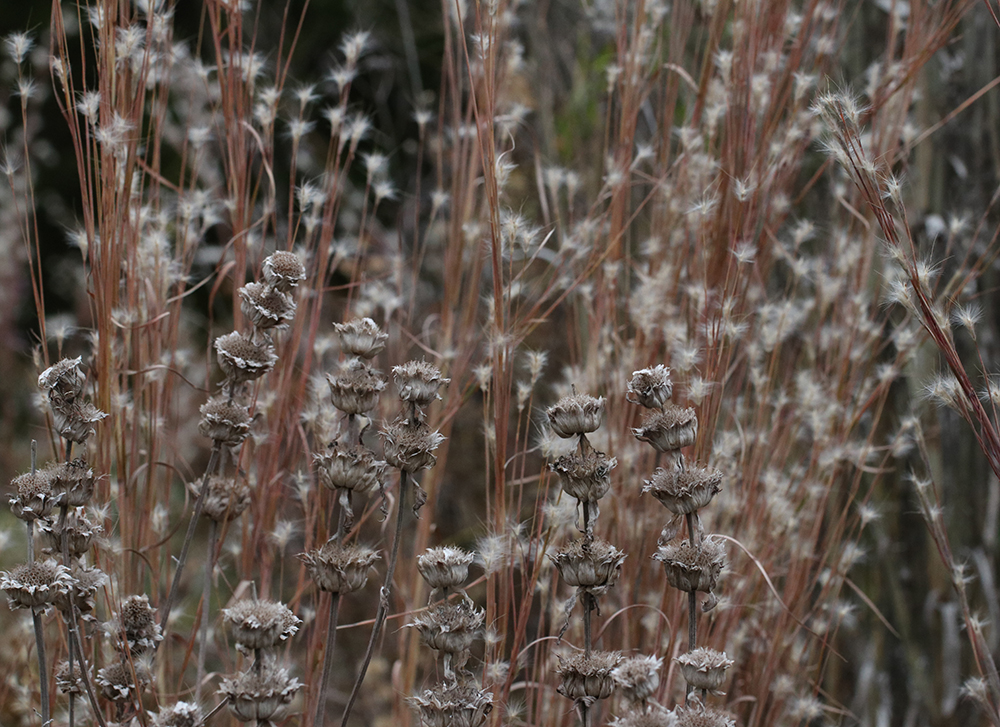
Seedheads of lemon beebalm (Monarda citriodora) and splitbeard bluestem grass (Andropogon ternarius). Photo by Debbie Roos.
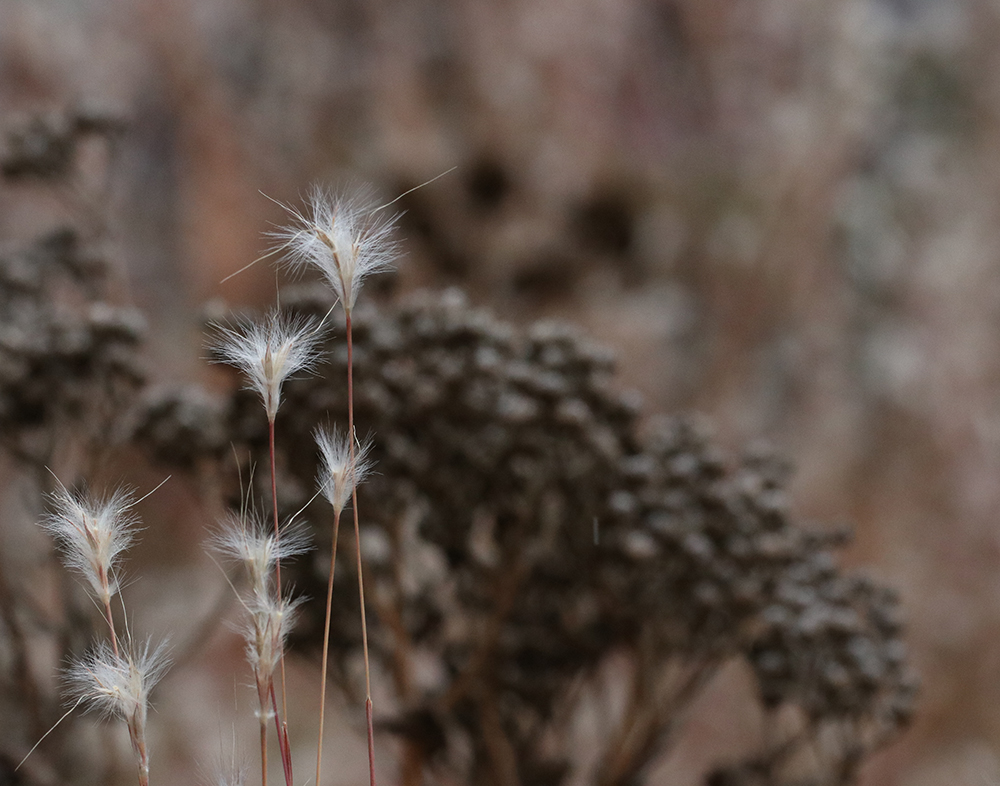
Fuzzy seedheads of splitbeard bluestem grass (Andropogon ternarius) in front of wild quinine (Parthenium integrifolium). Photo by Debbie Roos.
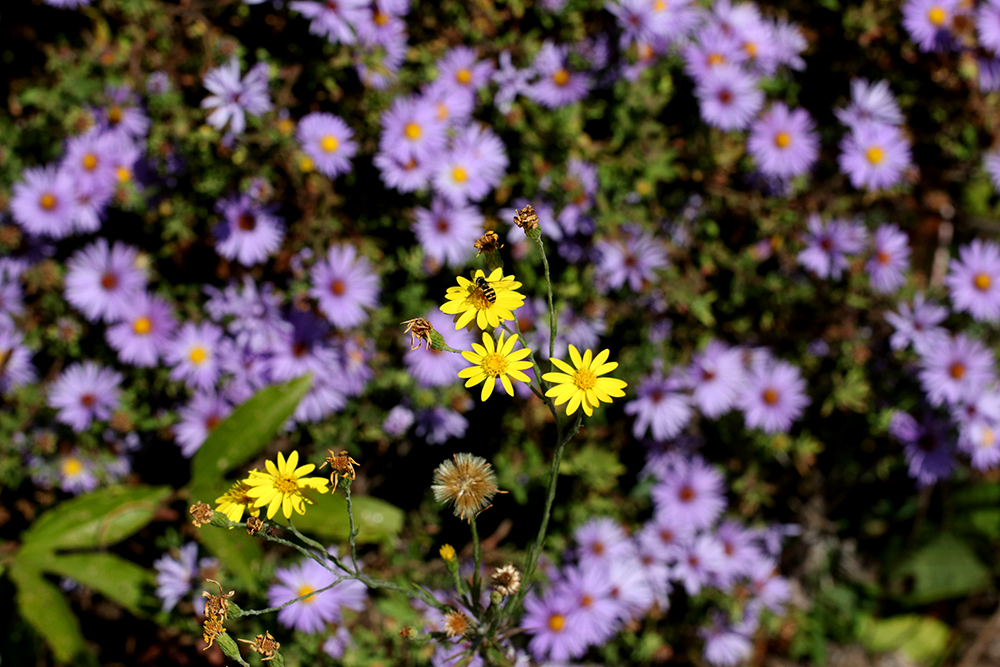
Aromatic aster (Symphyotrichum oblongifolium) with narrowleaf silkgrass (Pityopsis graminifolia) and purple passionflower vine (Passiflora incarnata). Photo by Debbie Roos.
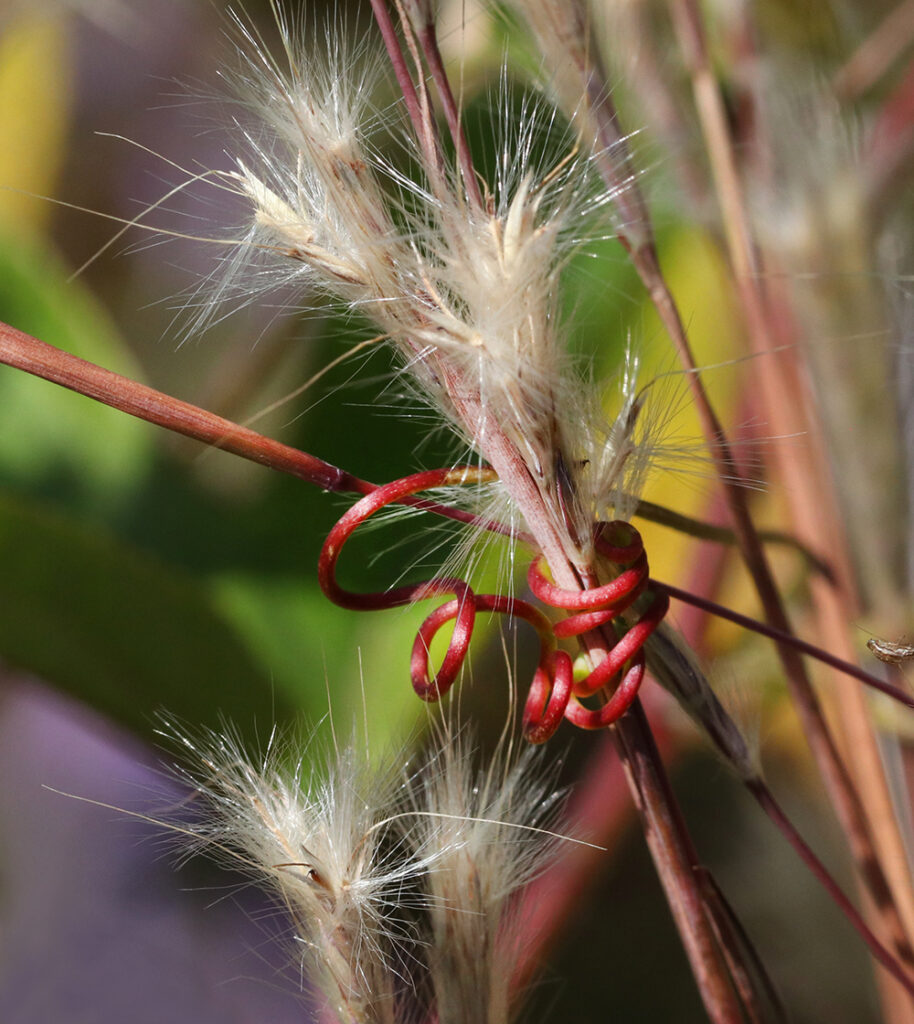
Passionflower vine (Passiflora incarnata) tendril around splitbeard bluestem grass (Andropogon ternarius). Photo by Debbie Roos.
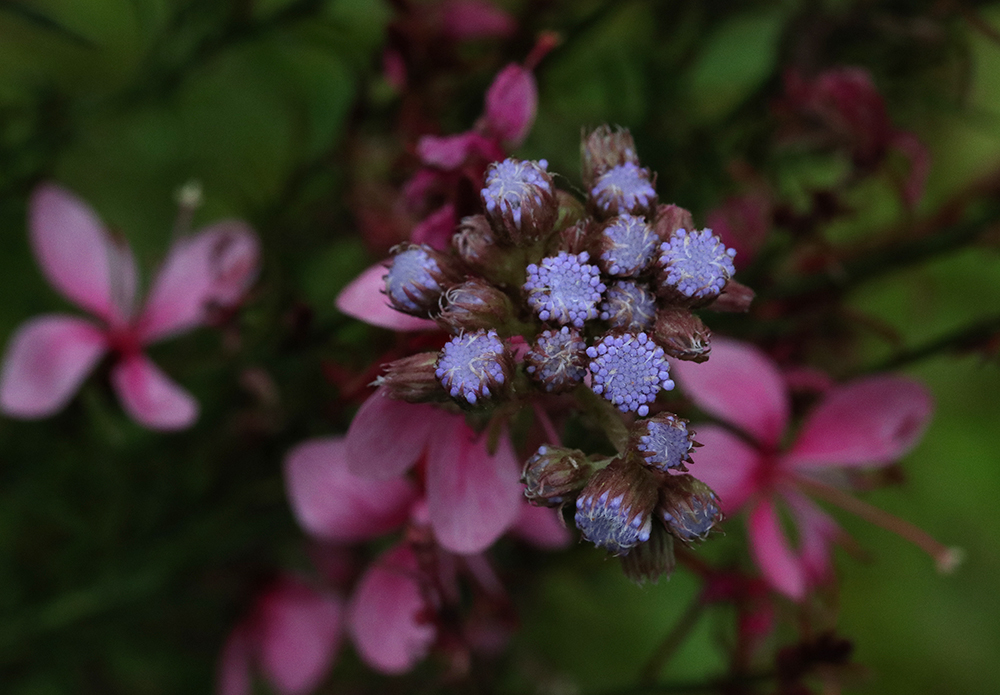
Palm-leaf mistflower (Conoclinium greggii) and beeblossom (Gaura lindheimeri ‘Belleza Dark Pink’). Photo by Debbie Roos.
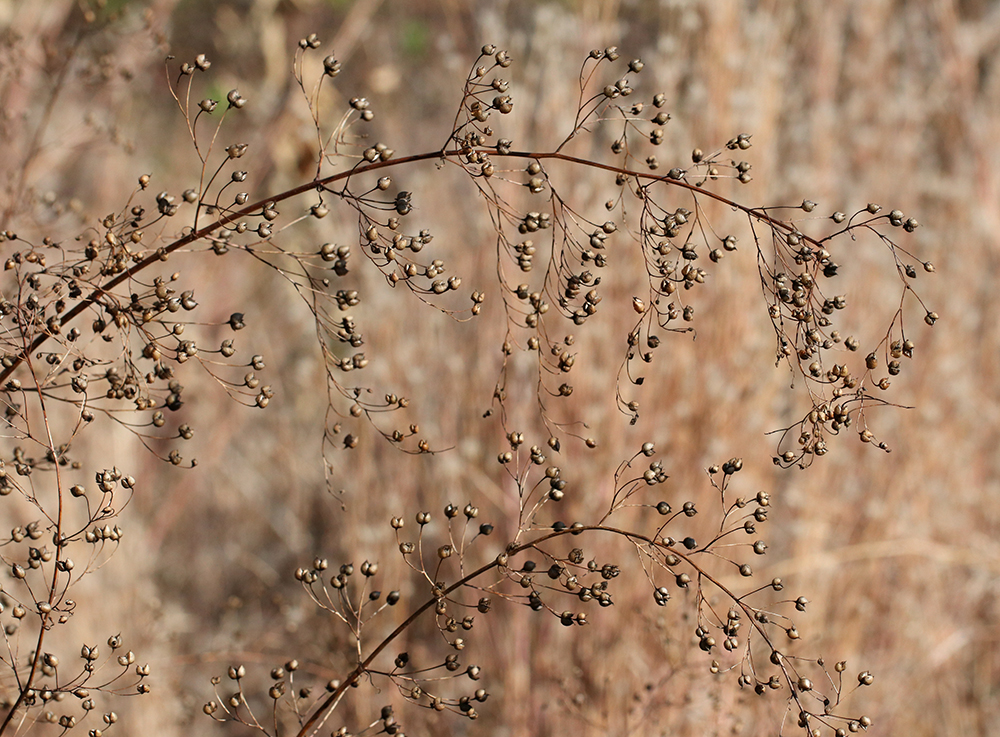
Arching stems of seedheads of late figwort (Scrophularia marilandica). Photo by Debbie Roos.
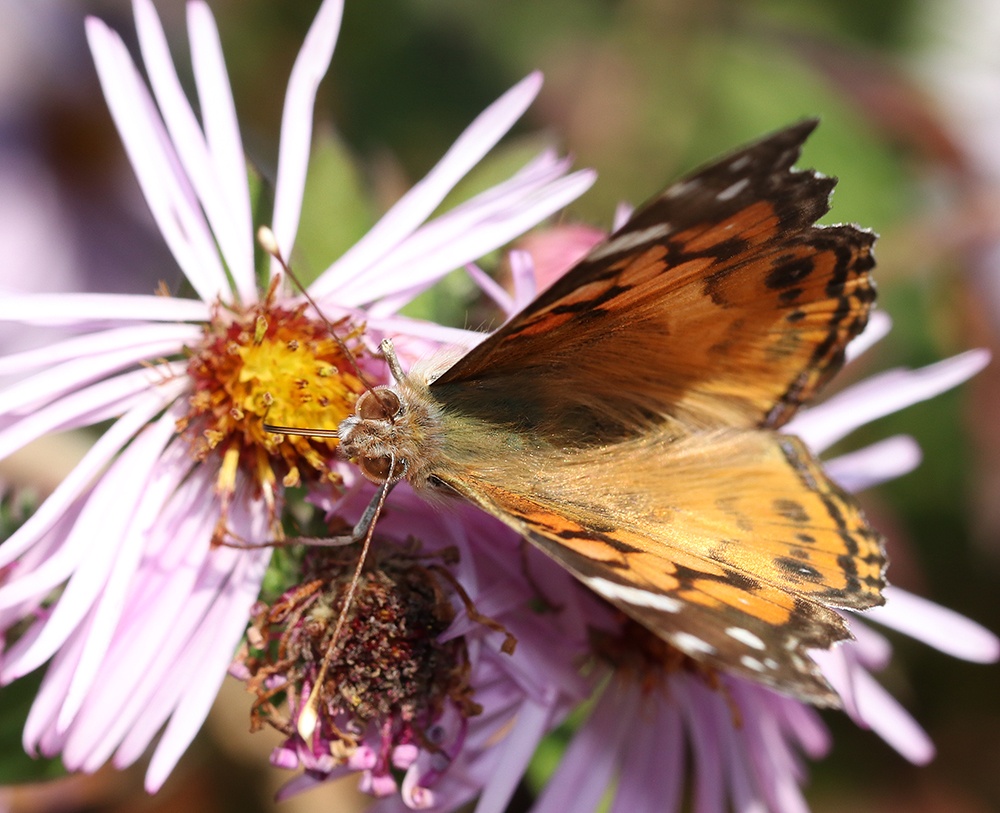
American lady nectaring on climbing aster bloom (Ampelaster carolinianus). Photo by Debbie Roos.
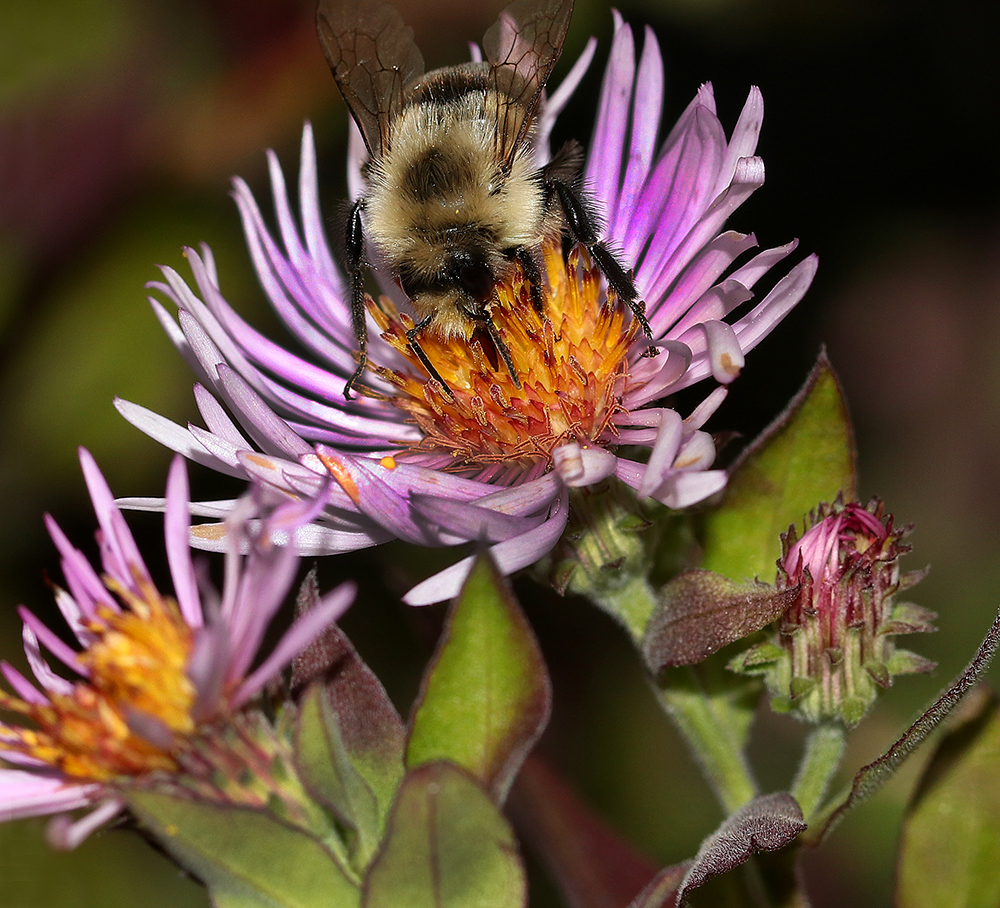
Bumble bee on climbing aster (Ampelaster carolinianus). Photo by Debbie Roos.
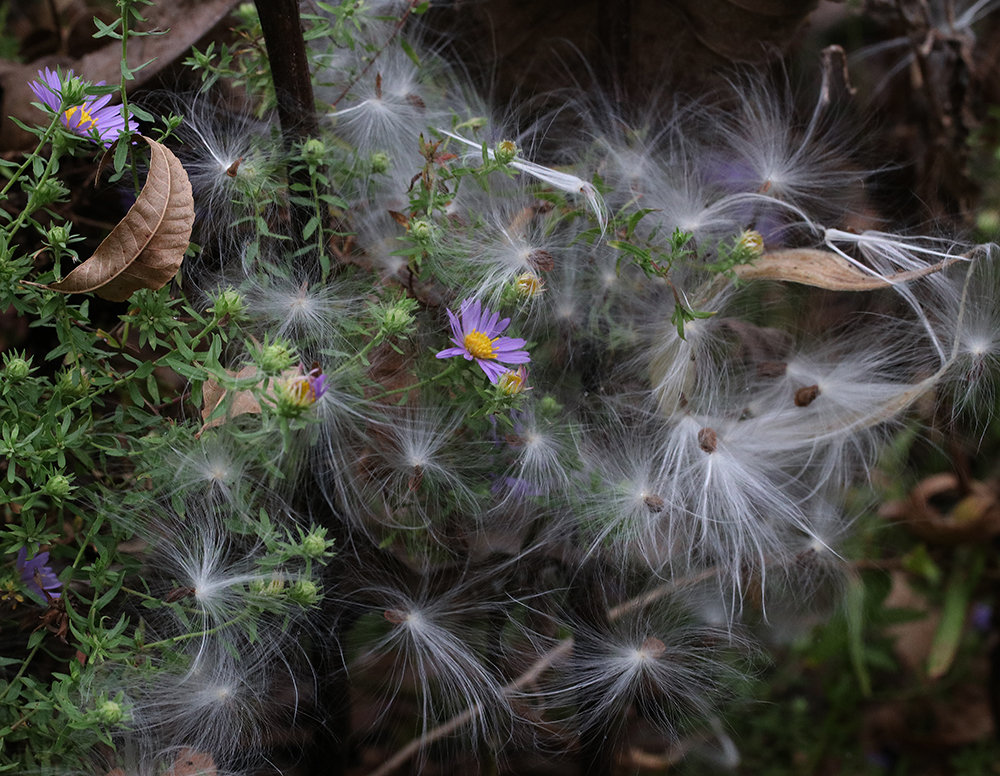
Dispersing seeds of butterfly weed (Asclepias tuberosa). Photo by Debbie Roos.

Seedheads of wild quinine (Parthenium integrifolium). Photo by Debbie Roos.
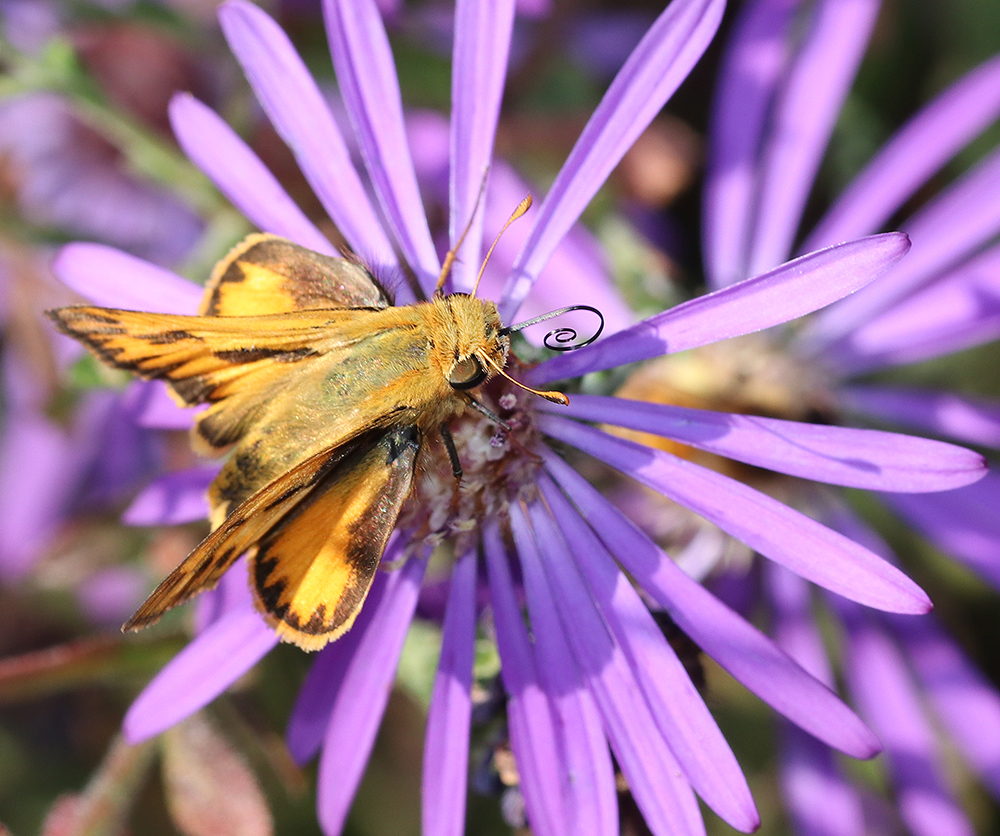
Fiery skipper on Georgia aster (Symphyotrichum georgianum). Photo by Debbie Roos.

Female green lynx spider protecting her nest of spiderlings on American clasping aster (Symphyotrichum patens). Photo by Debbie Roos.
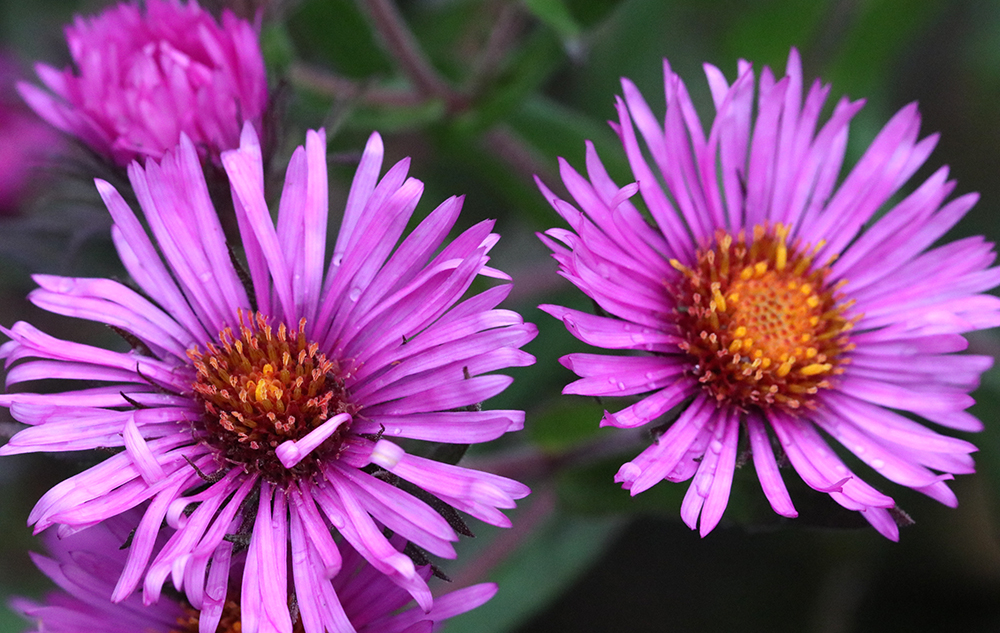
New England aster (Symphyotrichum novae-angliae ‘September Ruby’). Photo by Debbie Roos.


